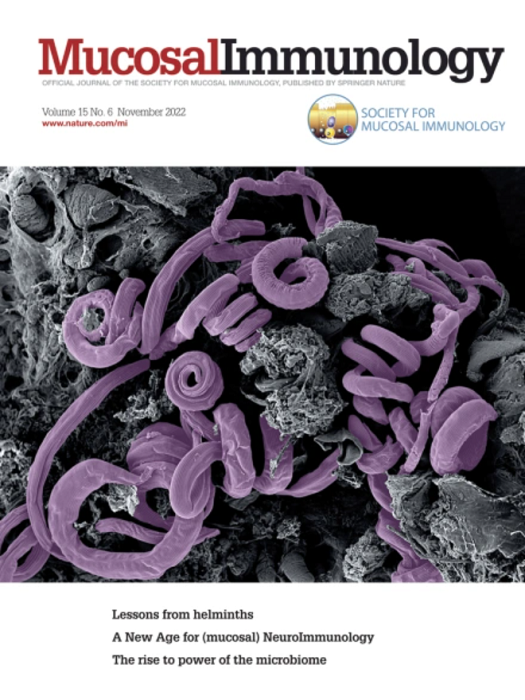激活 SST-SSTR5 信号通路可促进糖尿病小鼠角膜伤口愈合
IF 7.9
2区 医学
Q1 IMMUNOLOGY
引用次数: 0
摘要
糖尿病患者的角膜伤口愈合通常会延迟,并伴有过度炎症。然而,对其潜在的细胞和分子机制仍然知之甚少。在这里,我们发现由角膜神经纤维产生的一种免疫抑制肽--体节肽(SST)在链脲佐菌素诱导的糖尿病小鼠体内显著减少。此外,我们还发现,局部注射外源性 SST 能明显改善糖尿病角膜上皮擦伤后的再上皮化和神经再生。进一步的分析表明,在糖尿病角膜愈合过程中,外用 SST 能显著降低损伤炎症相关基因的表达,抑制中性粒细胞浸润,并使巨噬细胞极化从促炎性 M1 转向抗炎性 M2。此外,应用 SST 受体 5 型亚型激动剂 L-817,818 能显著减轻上皮损伤后的炎症反应,并明显改善小鼠的再上皮化和神经再生过程。综上所述,这些数据表明,激活 SST-SSTR5 通路可明显改善糖尿病引起的小鼠角膜伤口修复异常。靶向这一通路可能为恢复糖尿病患者受损的角膜伤口闭合和神经再生提供一种新策略。本文章由计算机程序翻译,如有差异,请以英文原文为准。
Activation of the SST-SSTR5 signaling pathway enhances corneal wound healing in diabetic mice
Corneal wound healing in diabetic patients is usually delayed and accompanied by excessive inflammation. However, the underlying cellular and molecular mechanisms remain poorly understood. Here, we found that somatostatin (SST), an immunosuppressive peptide produced by corneal nerve fibers, was significantly reduced in streptozotocin-induced diabetic mice. In addition, we discovered that topical administration of exogenous SST significantly improved re-epithelialization and nerve regeneration following diabetic corneal epithelial abrasion. Further analysis showed that topical SST significantly reduced the expression of injury inflammation-related genes, inhibited neutrophil infiltration, and shifted macrophage polarization from pro-inflammatory M1 to anti-inflammatory M2 in diabetic corneas' healing. Moreover, the application of L-817,818, an agonist of the SST receptor type 5 subtype, significantly reduced the inflammatory response following epithelial injury and markedly improved the process of re-epithelialization and nerve regeneration in mice. Taken together, these data suggest that activation of the SST-SST receptor type 5 pathway significantly ameliorates diabetes-induced abnormalities in corneal wound repair in mice. Targeting this pathway may provide a novel strategy to restore impaired corneal wound closure and nerve regeneration in diabetic patients.
求助全文
通过发布文献求助,成功后即可免费获取论文全文。
去求助
来源期刊

Mucosal Immunology
医学-免疫学
CiteScore
16.60
自引率
3.80%
发文量
100
审稿时长
12 days
期刊介绍:
Mucosal Immunology, the official publication of the Society of Mucosal Immunology (SMI), serves as a forum for both basic and clinical scientists to discuss immunity and inflammation involving mucosal tissues. It covers gastrointestinal, pulmonary, nasopharyngeal, oral, ocular, and genitourinary immunology through original research articles, scholarly reviews, commentaries, editorials, and letters. The journal gives equal consideration to basic, translational, and clinical studies and also serves as a primary communication channel for the SMI governing board and its members, featuring society news, meeting announcements, policy discussions, and job/training opportunities advertisements.
 求助内容:
求助内容: 应助结果提醒方式:
应助结果提醒方式:


